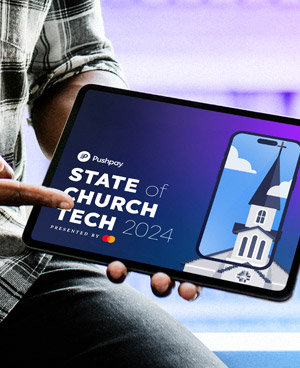Analysis and Data Literacy
The good news is that, for most of what a church wants to do and understand, you don’t have to be a data scientist. You don’t need certifications, master’s degrees, or PhDs.
I think this really starts with the same questions we think through in a business: What do we want to measure, and what’s important to us? Churches have differing views on this, but I would say that certain indicators of how people participate in a church can suggest that they’re growing in their relationship with their church.
Recently, we launched Pushpay Insights to make it really easy to access and understand that data. It provides ready access to data that most church leaders say is meaningful for them. So, it helps put your attendance, volunteering, and giving in perspective. And then not just that, it enables you to drill into those areas and ask, well, who in that group of volunteers, givers, or attendees matters right now? Who’s doing those things for the first time? And then follow up with who’s at risk? These people used to volunteer regularly, but maybe they’re leaving your church. Who are potential volunteers who would sign up to watch the kids? Churches just haven’t been able to ask those follow-up questions—until now.
It really helps to use all that data behind the scenes to surface important indicators and a list of people you can follow up with and try to make your ministry more effective.
Making Informed Decisions For Your Church
It’s not so much about how much time and energy it costs to collect data, because it turns out that it’s actually not that bad. The reason to analyze your data is to ask yourself if the investments you’re making in your ministry are actually working. Are people being impacted by this, or are you just spinning your wheels?
If you’re having a volunteer recruitment drive, data can help you determine the number of volunteer positions closed and the ratio of volunteers. Maybe the number of people that serve in multiple volunteer roles helps you figure out whether a ministry program actually worked. You should be able to double down on that data. Or if you led an initiative to grow your small groups ministries, and no one joined, you would benefit from those learnings, and be empowered to change that program or decide not to do that again.
Leading a church is not an easy task. Our mission is to help you make informed decisions so that you can effectively minister, lead, and invest your time and resources well. Data is what makes that possible.
Want to learn more about how Pushpay can help your church? Schedule a demo with our team to see how we can work for you.
See it in Action








